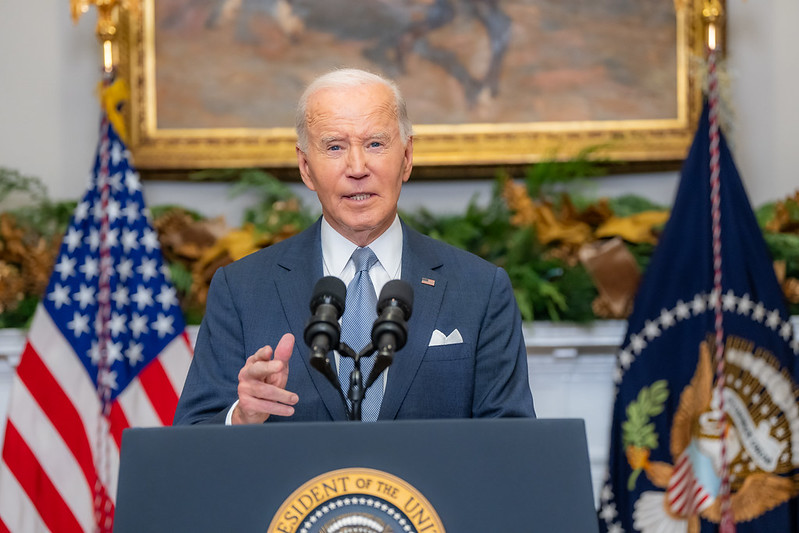Understanding the Term “Lame Duck President”
In American politics, the term “lame duck president” refers to an outgoing president who remains in office after a successor has been elected but before their inauguration. This period, typically spanning from November to January, is often marked by a perception of diminished power and influence. Without the leverage of a pending reelection, lame duck presidents are seen as having limited political capital. Yet, history reveals that this phase can be far more dynamic than it appears, with several presidents leveraging their final months to pass significant legislation, shape foreign policy, or cement their legacy.
A Historical Perspective on Lame Duck Influence
While many lame duck presidencies are characterized by political inertia, a few stand out for their extraordinary accomplishments during this period. These leaders defied expectations, using their remaining time in office to push through transformative policies, address pressing crises, or prepare the nation for future challenges.
James Madison and the End of the War of 1812
James Madison, the fourth president of the United States, faced the daunting challenge of concluding the War of 1812 during his lame duck period. After years of conflict with Britain, Madison’s administration successfully negotiated the Treaty of Ghent, signed on December 24, 1814. Although the treaty restored pre-war boundaries without resolving some of the issues that had caused the war, it was a pivotal moment for the young nation. The treaty’s ratification helped solidify Madison’s legacy as a leader who preserved the nation’s sovereignty during a critical period.
Abraham Lincoln and the 13th Amendment
Abraham Lincoln’s lame duck presidency following his 1864 reelection was one of the most consequential in American history. With the Civil War nearing its conclusion, Lincoln focused on ensuring the passage of the 13th Amendment, which would abolish slavery in the United States. Despite considerable opposition, Lincoln’s administration worked tirelessly to secure the necessary votes in the House of Representatives. The amendment passed on January 31, 1865, a mere two months before Lincoln’s assassination. This monumental achievement redefined American society and cemented Lincoln’s place as one of the nation’s greatest leaders.
Herbert Hoover’s Early Response to the Great Depression
Herbert Hoover’s presidency is often remembered for the onset of the Great Depression. However, during his lame duck period following Franklin D. Roosevelt’s victory in the 1932 election, Hoover attempted to mitigate the economic crisis. Despite his efforts, including advocating for banking reforms and urging congressional action, Hoover’s influence was significantly curtailed by Roosevelt’s refusal to collaborate during the transition. This period highlighted the limitations of lame duck presidencies but also underscored the potential for decisive action during moments of crisis.
Harry S. Truman and the Marshall Plan
Harry S. Truman’s lame duck presidency in 1948 exemplified the potential for impactful leadership during this transitional period. Although Truman had announced he would not seek reelection, he remained committed to advancing critical policies. One of his most notable achievements was securing congressional approval for the Marshall Plan, a landmark initiative to provide economic aid to war-torn Europe. This program not only facilitated Europe’s post-war recovery but also established the United States as a global leader in promoting democracy and economic stability.
Ronald Reagan and the End of the Cold War
Ronald Reagan’s final months in office following the election of George H. W. Bush in 1988 were marked by significant progress in U.S.-Soviet relations. Reagan’s steadfast commitment to diplomacy culminated in the signing of the INF Treaty, which eliminated intermediate-range nuclear missiles and reduced Cold War tensions. Although Reagan’s presidency was winding down, his influence during this period underscored the enduring potential for lame duck presidents to effect meaningful change on the global stage.
Joe Biden and the End of His Presidency
As Joe Biden’s presidency approached its conclusion, speculation abounds about how his lame duck period would unfold. While Biden has announced that he will not seek reelection, his administration’s focus on delivering key legislative victories and maintaining global leadership remains evident.
Legislative Achievements and Ongoing Challenges
Biden’s tenure has been marked by significant domestic achievements, including the passage of the Inflation Reduction Act, investments in infrastructure, and measures to combat climate change. As a lame duck president, Biden prioritized cementing these accomplishments while addressing unresolved challenges, such as immigration reform and gun control.
Foreign Policy Legacy
On the international stage, Biden has played a pivotal role in rallying NATO allies in response to Russia’s invasion of Ukraine. His administration’s efforts to strengthen global alliances and counter rising authoritarianism will likely remain central themes during his final months in office. Whether Biden can broker additional diplomatic breakthroughs or resolve lingering tensions with China will shape his legacy as a leader on the global stage.
Challenges of Lame Duck Leadership
Like his predecessors, Biden faces the inherent limitations of lame duck leadership. With attention shifting to the 2024 presidential race, his ability to influence Congress and drive the national agenda may diminish. However, history demonstrates that lame duck presidents can defy expectations, using their final months to achieve lasting impact.
Lessons from History
The history of lame duck presidencies reveals a fascinating paradox: while these leaders often face diminished authority, their final months in office can be among the most consequential of their tenures. From Lincoln’s push for the 13th Amendment to Reagan’s diplomatic breakthroughs, lame duck presidents have repeatedly demonstrated the capacity to lead with resolve and vision.
